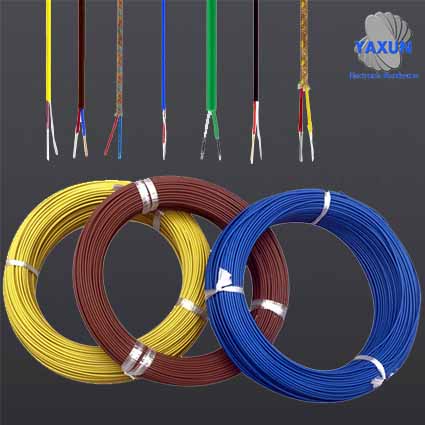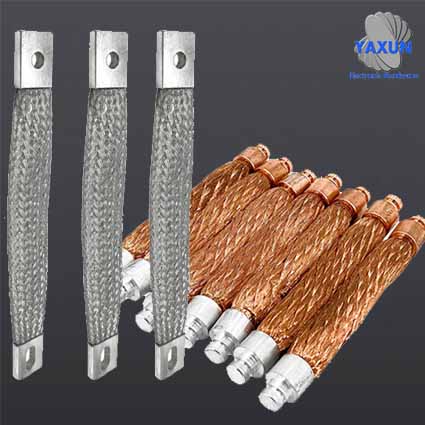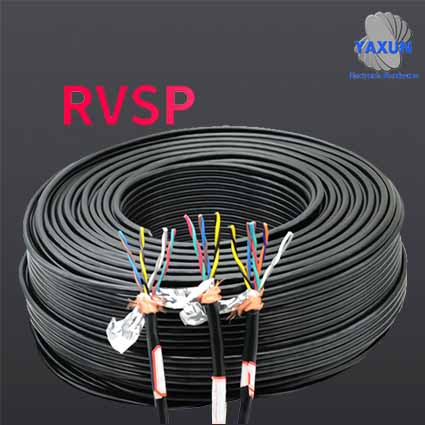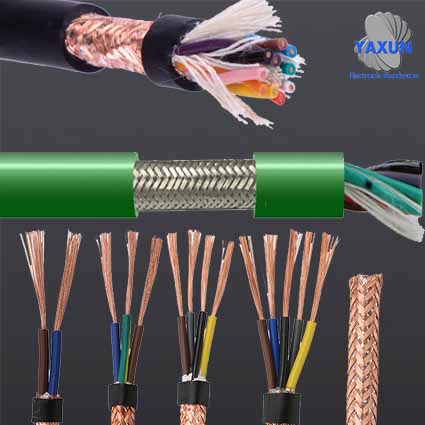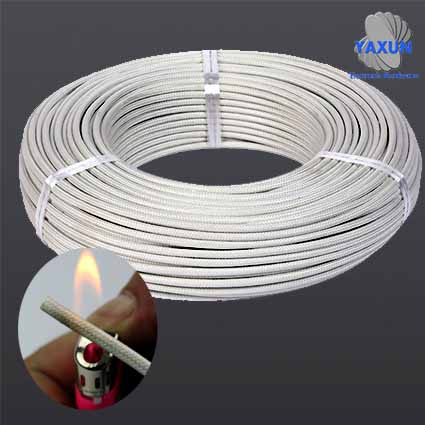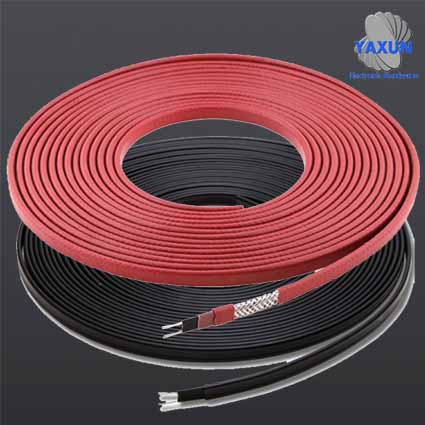Classification and Application of Compensation Wire
- PRODUCT DETAIL
What is the compensation wire?
Compensation wires are a pair of insulated wires with the same nominal value as the thermoelectromotive force of the matched thermocouple within a certain temperature range (0~100℃). Use them to connect the thermocouple and the measuring device to compensate for the error caused by the temperature change at the connection between them and the thermocouple.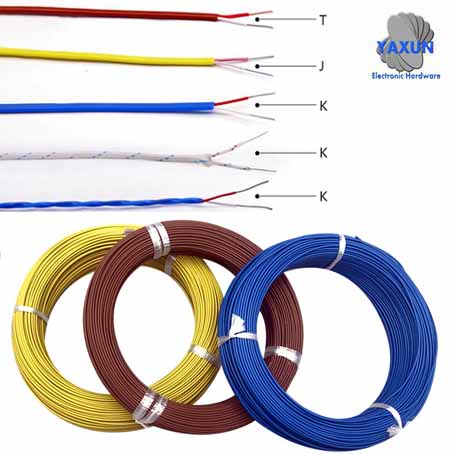
Introduction of compensating wire
A special wire used to extend the cold end of a thermocouple to a place far away from high temperature and relatively stable temperature. It is essentially a thermocouple composed of two different metals. Within a certain temperature range, its thermoelectric properties are basically the same as those of the main thermocouple. By connecting the compensating wire to the cold end of the thermocouple, the temperature signal output by the thermocouple can be transmitted to the control room tens of meters away and sent to the display instrument or control instrument. This is equivalent to extending the thermocouple to a place where the temperature is constant, which solves the problem of high temperature and temperature instability caused by the cold end of the thermocouple near the hot device. Easy to use, it is often used in thermocouple installation. They are dedicated wires. One type of compensation wire can only be used in conjunction with the corresponding type of thermocouple, and the positive and negative polarity cannot be reversed.Precautions for Compensation Wire
1. Selection of compensation wireThe compensation wire must be correctly selected according to the type of thermocouple used and the occasion used. For example, the compensation wire of the k-type couple should be selected for the k-type couple, and the operating temperature range should be selected according to the use occasion. Usually the kx working temperature is -20~100℃, and the wide range is -25~200℃. The error of ordinary grade is ±2.5℃, and that of precision grade is ±1.5℃.
2. Contact connection
Keep the temperature of the two contacts as close as possible to the two contacts of the thermocouple terminal. The temperature at the junction of the instrument terminal should be as consistent as possible. Where there is a fan in the instrument cabinet, the contact point should be protected not to make the fan blow directly to the contact point.
3. Use length
Because the signal of the thermocouple is very low, it is in the microvolt level. Temperature fluctuations will occur when the control is severe.
According to our experience, it is usually better to control the length of the thermocouple compensation wire within 15 meters. If it exceeds 15 meters, it is recommended to use a temperature transmitter to transmit the signal. The temperature transmitter converts the potential value corresponding to the temperature into a direct current for transmission, which has strong anti-interference.
4. Wiring
Compensation wire wiring must be far away from power lines and interference sources. Where crossing is unavoidable, the crossing method should also be adopted as much as possible, not parallel.
5. Shield compensation wire
In order to improve the anti-interference of the thermocouple connecting wire, shielded compensation wire can be used. For occasions with many on-site interference sources, the effect is better. However, the shielding layer must be strictly grounded, otherwise the shielding layer will not only not play a shielding role, but will enhance interference.
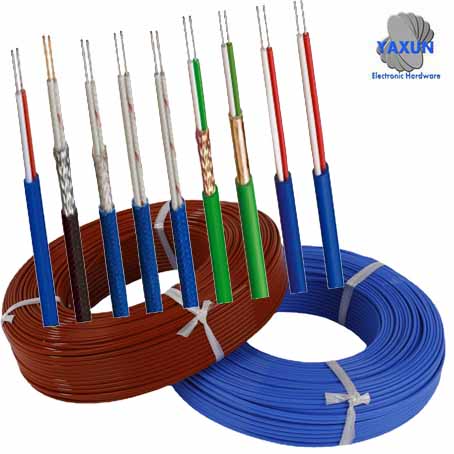
Compensation wire wiring model
Equivalently adopts:IEC584-3 "Thermocouple Part III-Compensation Wire" international standard, the product quality is better than the B4989-85 "Thermocouple Compensation Wire" national standard. The insulating layer and the protective layer are made of imported high-quality fluoroplastics, and the new process of integral continuous extrusion is adopted, so that the product has excellent acid, alkali, wear resistance and non-flammable properties. Can be immersed in oil and water for long-term use. The operating temperature is -60~205~260℃, which belongs to the contemporary international advanced level. Model and name:
Compensation wire models are divided according to product varieties as follows: SC, KC, KX, EX, JX, TX.
in:
a) The first letter of the model corresponds to the graduation number of the thermocouple;
b) The letter "X" means extended compensation wire (type)
c) The letter "C" means compensation type compensation wire (type)
Note: SC type compensation wire can be equipped with R type thermocouple with graduation number.
Use classification, allowable level, and coloring signs of protective layer:
|
Use classification
|
Sign
|
Allow marking and coloring of the protective layer
|
|
|
Ordinary
|
Precision
|
||
|
General use
|
G
|
(black)
|
S (gray)
|
|
Heat resistant
|
H
|
(black)
|
S (gray)
|
Structural features, insulation layer, protective layer material, operating temperature
|
Insulation layer and protective layer
|
Operating temperature
|
|
|
Material
|
symbol
|
|
|
Polyvinyl chloride
|
PV
|
-25~70℃
-25~105℃
|
|
Polyperfluoroethylene propylene
|
FEP
|
-60~205℃
|
|
Soluble PTFE
|
PFA
|
-60~260℃
|
Product label (mark)
| Equipped with thermocouple index number |
General use (G)
Product label
|
Heat resistant (H)
Product label
|
||
|
Ordinary
|
Precision level (S)
|
Ordinary
|
Precision level (S)
|
|
|
S
|
SC-G
|
SC-GS
|
SC-H
|
--
|
|
N
|
NC-G
|
NC-GS
|
NC-H
|
NC-HS
|
|
K
|
NC-G
|
NC-GS
|
NC-H
|
--
|
|
KC2-G
|
KG2-GS
|
KC2-H
|
KC2-HS
|
|
|
KX-G
|
KX-GS
|
KX-H
|
KX-HS
|
|
|
E
|
EX-G
|
EX-GS
|
EX-H
|
EX-HS
|
|
J
|
JX-G
|
JX-GS
|
JX-H
|
JX-HS
|
|
T
|
TX-G
|
TX-GS
|
TX-H
|
TX-HS
|
Compensation wire alloy wire and insulation color
| Line type of compensation number | Equipped with the index number of the thermocouple |
Alloy wire for compensation wire
|
Insulation layer coloring | ||
|
positive electrode
|
negative electrode
|
positive electrode
|
negative electrode
|
||
|
SC
|
S (platinum rhodium 10-platinum)
|
SPC (copper)
|
SNC(Copper Nickel)
|
Red
|
green
|
|
NC
|
N (NiCrSi—NiSi)
|
NPC (iron)
|
NNC(Copper Nickel)
|
Red
|
yellow
|
|
TC
|
T (Copper-Constantan)
|
TPC (copper)
|
TNC(Copper Nickel)
|
Red
|
Blue
|
|
KX
|
K (NiCr—NiSi)
|
KPX (nickel chromium)
|
KNX(Copper Nickel)
|
Red
|
black
|
|
EX
|
E (Ni-Cr-Cu-Ni)
|
EPX (Nickel Chromium)
|
ENX(Copper Nickel)
|
Red
|
Brown
|
|
JX
|
J (iron-copper-nickel)
|
JPX (iron)
|
JNX(Copper Nickel)
|
Red
|
purple
|
|
TX
|
T (copper-copper-nickel)
|
TPX (copper)
|
TNX(Copper Nickel)
|
Red
|
White
|
"C" means that the thermoelectric potential and resistance value of the compensation cable meet the requirements of the following table:
2. The insulation resistance of the compensation cable in the moisture-proof test shall not be less than (10 meters) 25MΩ after 24 hours in 40℃ water.
3. The compensation cable is subjected to a 5 times outer diameter test after 24 hours of heat aging, and the voltage test is 5000V/1min without breakdown.
The role of compensation wire
It is to extend the hot electrode, that is, the cold end of the mobile thermocouple, and connect with the display instrument to form a temperature measurement system. Equivalently adopts the national standard of IEC 584-3 "Thermocouple Part III-Compensation Wire". The products are mainly used in various temperature measuring devices, and have been widely used in nuclear power, petroleum, chemical, metallurgy, electric power and other sectors.
Order description
When ordering: indicate the model, specification, core section, number of cores, shielding method and quantity
Example: EX-GV2R-GS 2×2.5mm 21500m EX-FPF-GS 24×2×2.5mm 21000m (total shielding)
KX-HF4BPP-GS 12×2×1.5mm 212000m (pair screen)
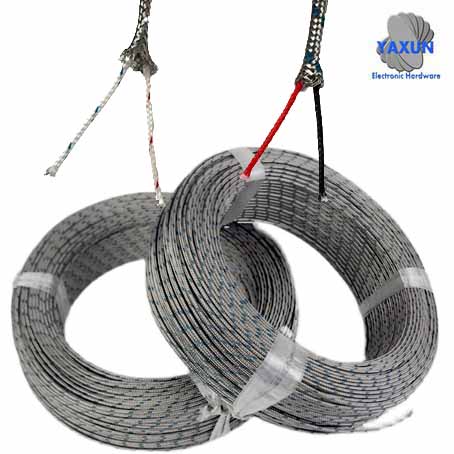
Thermocouple Compensation Wire
When selecting the thermocouple compensation wire, it is necessary to know the ambient temperature of the thermocouple compensation wire and the on-site industrial and mining conditions, and select the appropriate compensation wire sheath according to the on-site environmental temperature. Generally, polyvinyl fluoride sheath is selected when the ambient temperature is -25~105℃; When the ambient temperature is -60~205℃, choose polyperfluoroethylene as the sheath of the compensation wire; At -60~260℃, polytetrafluoroethylene is selected as the sheath of thermocouple compensation wire. Therefore, you must pay attention to the on-site industrial and mining situation when choosing.The principle of thermocouple compensation wire temperature measurement
The function of the compensating wire for the thermocouple is to extend the hot electrode, that is, the cold end of the mobile thermocouple, and connect with the display instrument to form a temperature measurement system. The products are mainly used in various temperature measuring devices and have been widely used in petroleum, chemical, metallurgy, electric power and other sectors.
Generally speaking, the thermocouple may be tens of meters away from the thermometer, and the temperature of the cold end (outlet end) of the thermocouple is different from the ambient temperature of the thermometer (even up to tens of degrees).
If ordinary copper wire is used, according to the principle of thermocouple, a thermoelectric potential will be generated at the connection, which will cause measurement errors.
The voltage drop problem of long-distance transmission wires:
Because of the high input impedance of the thermometer, the thermocouple generated by the thermocouple (millivolt level) and the transmission current (microA level) is very small, and the voltage drop loss on the wire is very small. In general, within the error range. Therefore, there is a thermocouple transmitter, which inputs thermocouple signals and outputs 4-20ma, so that it can be transmitted over long distances without compensating wires.
If a compensation wire is used (must match the graduation number of the thermocouple), the metal material it selects can generate the smallest possible temperature difference potential at the connection point and minimize the temperature measurement error.
PREV:Copper, Aluminum, Steel Stranded Wire
NEXT:NONE
NEXT:NONE

